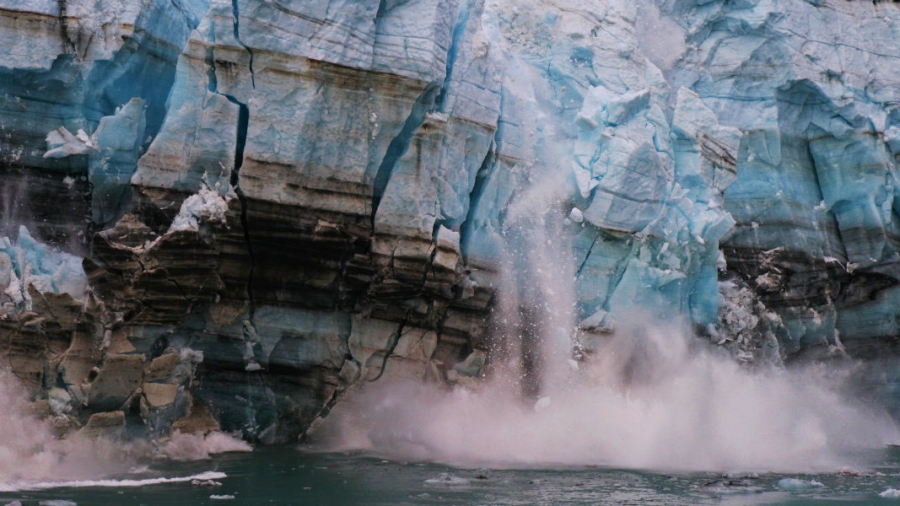Is the Climate Crisis a Top Priority?
Despite claims asserting that addressing the Climate Crisis ranks high on the agenda in corporate boardrooms and among senior executives, recent surveys suggest that this perspective may not align with reality. Should this prove accurate, it’s the logistics sector that will bear the brunt of the consequences since it’s expected to rectify any future disruptions stemming from climate-related issues within organizational supply chains.
A recent article highlighted a survey involving over 700 CEOs and senior executives from seven major economies. They were queried about the responsibility of identifying and promoting changes related to climate change. When examining the role of businesses in identifying and planning necessary changes, respondents from three ‘Western’ countries exhibited the lowest level of commitment, with the UK scoring the lowest at 48 percent. In contrast, the other four countries saw executives attributing the responsibility for their own future to businesses, ranging from 70 percent in Brazil to 93 percent in India.
The article also referenced another survey conducted by the UK insurance broker Gallaghers, which involved 1500 business leaders. Although nearly half of the respondents had experienced some adverse effects on their businesses due to climate change, the majority had taken no steps to adapt or mitigate known and potential risks. So why is there a prevailing assumption in some countries that it’s the government’s role to drive the necessary changes?
Several factors contribute to this:
- Short-Term Focus: Senior executives are often less concerned with addressing threats to the business that might manifest after their tenure.
- Government Safety Net: Many believe that the government will likely compensate for damage, even if facilities are situated in known floodplains.
- Technological Hope: There’s a belief (or hope) among senior executives that future technologies will provide solutions to tackle the climate crisis.
- Visible Risks: Senior executives tend to have a better grasp of and can manage ‘visible’ risks like cybercrime, compared to the more abstract and less tangible risks associated with climate change.
- Knowledge Gap: Senior executives may lack a sufficient understanding of climate change science or may not know how to apply this knowledge.
- Government’s Role: There’s an assumption that the government possesses the relevant facts and is best suited to develop appropriate solutions.
Key Terms in Climate Action
We emphasize the importance of defining terms in supply chains to ensure uniform understanding across the organization. The same principle applies to terms related to climate action:
- Adaptation involves safeguarding valuable assets from the adverse consequences of climate change, driven by expected external climate-induced events beyond an organization’s control. This requires a risk-based analysis to identify necessary changes and investments.
- Mitigation comprises actions aimed at limiting additional Greenhouse Gas (GHG) emissions. It includes energy conservation, reduced water usage, using recyclable packaging, and other measures within an organization’s control.
- Portfolio of Approved Actions: When supply chain risks are identified, Adaptation necessitates choices: eliminate, minimize, share, or transfer the risk. Mitigation requires a company-wide plan to achieve specified emissions reductions.
Identifying External Physical Risks
Unfortunately, adapting to climate change (Adaptation) hasn’t received the same attention in government and media as reducing greenhouse gas emissions (Mitigation). Nevertheless, it’s wise for both society and businesses to take early action to protect existing assets. For organizations, this begins with identifying external physical risks throughout their supply chains and identifying potential ‘cascading risks’ where disruptions may ripple along and across the chains, extending beyond defined points.
Consider the current situation with shipping delays in the Panama Canal. While this crucial international trade route connects ports and countries worldwide, the primary traffic flows from China and Japan to the US East Coast, carrying 40 percent of US consumer goods. The Panama Canal Authority (ACP) has described the situation as presenting ‘unprecedented challenges’ and having ‘no historical precedence,’ echoing other climate-induced emergencies.
When the Canal was constructed, Central America experienced high rainfall. However, in the last 25 years, there has been a significant increase in dry periods. The ongoing drought has decreased water flow into the Canal system’s lakes by 30 to 50 percent, with no expected improvement until around September 2024.
The Canal was designed to replenish the locks for each ship’s transit using freshwater from the lakes. However, the ACP cannot substitute seawater for lake water due to the absence of desalination equipment in the pumping facilities responsible for purifying lake water for Panama’s cities.
This ongoing disruption is likely to result in additional costs for shippers:
- Container ships must adhere to specific draught limits when entering the Canal system, or they must (at an added cost) unload excess containers for transit and reload them at the exit.
- Shipping companies may impose surcharges to cover potential delays.
- Spot prices for North Asia to US East Coast cargoes could rise.
- Some may opt to reroute from North Asia to the US East Coast via the Suez Canal, incurring an additional sailing time of 7-14 days.
- The ‘cascading risks’ from the disruption will affect berth availability at destination ports, transport and warehouse slot bookings, and retailers’ promotional plans, especially leading into the Christmas season.
Risks to Physical Infrastructure
Beyond the disruptions in Panama due to drought, other regions are expected to experience more intense hurricanes, cyclones, tornadoes, storms, and increased rainfall. These events are forecasted to cause significant damage to port and hinterland infrastructure, necessitating extensive repairs. Impacted areas include North Asia (for manufactured products), Korea, Japan, Taiwan, coastal China, and South East China (for flooding). Additionally, ports along the US Gulf of Mexico coast and the Mediterranean area will face weather extremes, including heatwaves, which can damage infrastructure.
Identifying external physical risks to your organization’s supply chains is crucial. This involves examining the links in the your supply chain design, where affected links are connected to critical materials and sub-assemblies nodes. This identification helps determine the necessary Adaptation actions for the business.



